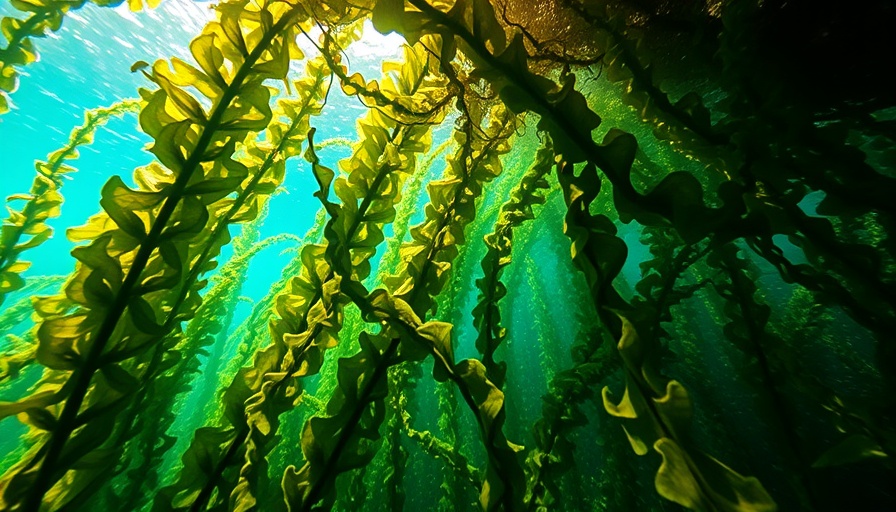
The Importance of Kelp Forests and Their Global Decline
Kelp forests are often overlooked, yet they play a crucial role in maintaining the health of marine ecosystems and combating climate change. These underwater gardens are a haven for biodiversity, providing habitats for countless species, including fish, sea urchins, and countless other marine life. Sadly, they are disappearing at an alarming rate—over half of the world's kelp forests have declined in the past 50 years due to human activity and environmental changes, jeopardizing not only the underwater ecosystems but also the communities that rely on these resources.
Haida Gwaii: A Community Response to Restoration
On the coast of Haida Gwaii, marine stewardship is taking on a hands-on approach to restore the local kelp population. Advocates like Dan McNeill lead initiatives to collect sea urchins, previously a crucial element of the kelp ecosystem. By taking part in the “Chiix̱uu Tll iinasdll: Nurturing Seafood to Grow” project, McNeill and others are addressing the ecological imbalance caused by the absence of sea otters, which have historically kept urchin populations in check. This local effort is as much about cultural preservation as it is about environmental restoration, emphasizing the deep connection between the Haida Nation and its marine resources.
The Nutritional and Economic Potential of Kelp
Kelp is not just a vital part of the ocean’s ecosystem; it is a highly nutritious food source for humans as well. Packed with dietary fiber, omega-3 fatty acids, essential amino acids, and a variety of vitamins, kelp stands out as a superfood with untapped potential. Aaron Eger, founder of the Kelp Forest Alliance, highlights future applications in industries such as bioplastics, cosmetics, and pharmaceuticals, which could result in wide-ranging economic benefits while promoting sustainable practices.
Challenges to Kelp Forests and What We Can Do
The beautiful underwater gardens face multiple threats: habitat destruction, overharvesting, pollution, climate change, and sedimentation. Each of these challenges has roots in human activities that can be mitigated through conscious action. As eco-conscious individuals, we can support conservation efforts and practice sustainable living by advocating for marine protection initiatives, reducing pollution, participating in cleanup efforts, and consuming sustainably sourced seafood.
The Future of Kelp Forests: Predictions and Opportunities
With a significant portion of the world’s kelp forests at risk, the future does not need to be bleak. Collaborative global efforts focused on restoring and preserving these marine habitats could reverse some of the damage. Programs like those in Haida Gwaii highlight how local communities can lead initiatives that contribute to broader conservation goals. Furthermore, awareness campaigns can help educate others about the importance of kelp and inspire a movement towards more sustainable practices.
Action Orientation: Making a Difference
Understanding the value of kelp forests extends beyond the ocean's edge; it speaks to our responsibility as stewards of the earth. Each person has the power to make choices that contribute to the health of our environment. By supporting sustainable fishing practices, pledging to reduce plastic usage, and getting involved with local conservation groups, we can all play a role in protecting these vital ecosystems. Every action counts, and together we can ensure a healthier planet for future generations.
Kelp forests represent more than just unique marine ecosystems—they symbolize the delicate balance of our planet's health and the interconnectedness of all living beings. It’s time we recognize their value and act to protect them.
 Add Row
Add Row  Add
Add 



 Add Row
Add Row  Add
Add 
Write A Comment